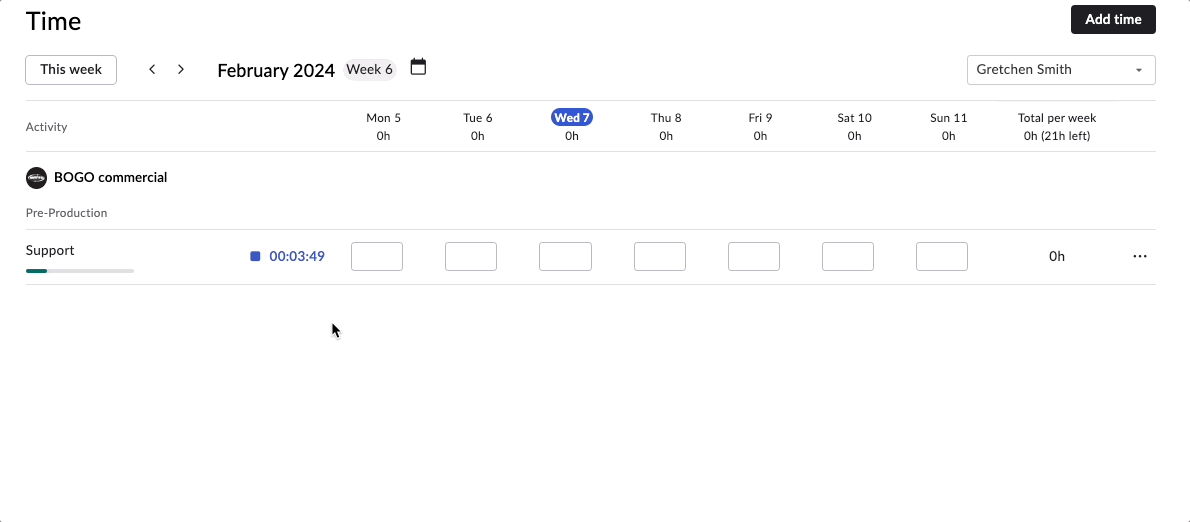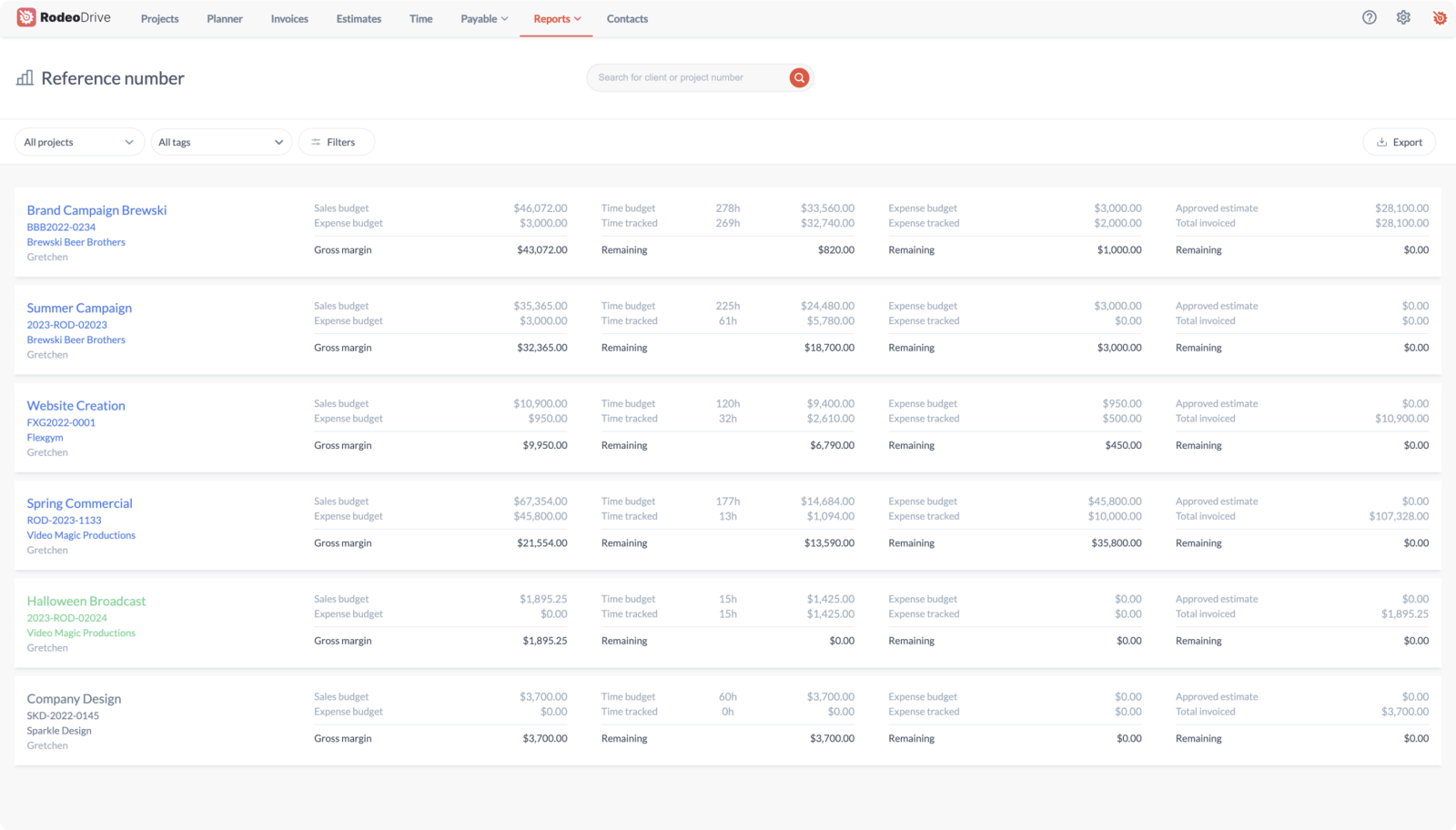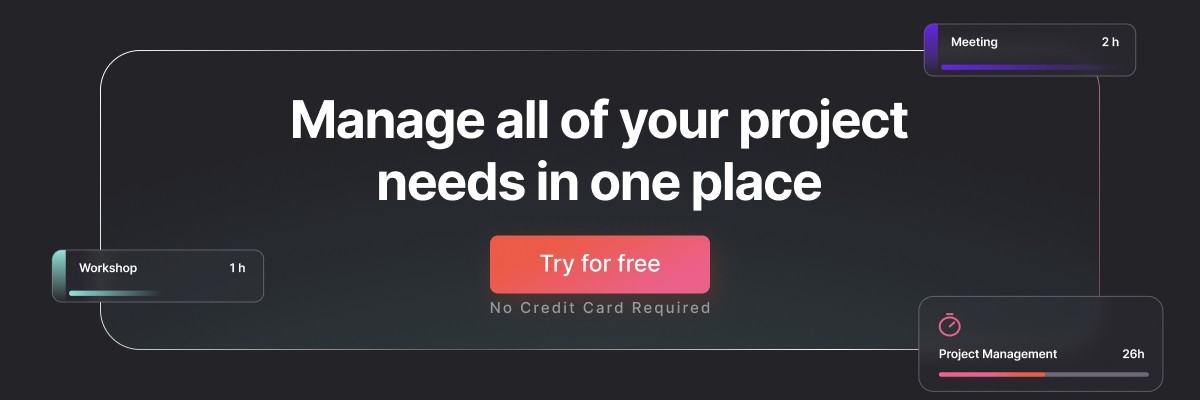8 Tips to Keep Projects Under Budget
You’re super excited to start work on a new project, and the creative juices start flowing as soon as you kick off with the first task. Everything seems to be going well, as you have all of the resources you need.
Halfway through, a few unforeseen obstacles are hurled your way. Maybe you can still complete the project before the deadline, but these unexpected deviations have caused you to exceed the approved budget. How did this happen? In this blog, we have gathered 8 practical tips that will help you manage cost variances and stay on track with your project budgets.
1. Define the scope of the project
Having clear goals and objectives from the beginning is crucial to successfully manage a project budget. Sometimes clients passionately talk about a vague concept that they want you to achieve. Team brainstorming sessions also tend to produce ideas that everyone is excited about, without having any concrete parameters yet.
No matter how eager you are to get started and indulge yourself in the creative process, make sure you define your exact deliverables first.
This means discussing with your client or team all of the details, and creating a budget proposal for approval that includes the following:
- Project’s goals and objectives
- Deliverables
- Budget summary
- Project timeline and deadlines
- Tasks need to be completed in order to achieve these goals
- Budget tracking process
- Reporting process
- Approval structure
With the project budget proposal approved and confirmed in writing, you won’t be leaving the success of the project up to chance. That way, you will be able to better allocate your resources when strategically planning the next steps.
Scope creep is another potential problem that you’ll want to immediately nip in the bud. This term describes situations when more details get added to the project after it’s already underway, ultimately causing the project to become much bigger than anticipated. This might include additional project requirements, deliverables, or a substantial shift in project objectives.
While the client might not even notice that they are asking for more than what was originally discussed, they will probably also assume the extra work that comes along with this is included in the initial project pricing. Avoid this at all costs, literally, by always referring to what was confirmed in writing.
2. Define the necessary resources
Once the scope of the project is clear, you can start with your resource planning. Efficiently planning your resources will depend on how well they are managed.
Thus, make sure you have a system in place to keep a clear overview of your available resources at all times, which includes:
- Financial resources
- Human resources
- Materials and tools
Don’t underestimate how important human capital is, as this doesn’t just mean knowing how many staff members you have on hand for certain hours and tasks.
As a project manager, you also need to keep track of the specialized knowledge and skills that your team members are developing. Take into consideration not only their skills but also their availability and strengths.
When determining which materials and tools you’ll need to be successful, don’t forget to include the project management tools you might need in your calculation. To make it easier on you, look for project management software that comes with time tracking, budgeting, and reporting features so that you can automate your administrative project work and save numerous hours.
3. Set a realistic project budget
In reality, setting realistic budgets should be the first step of any project. The reason we switched it around in this list is that many projects start with an idea or concept before finances come into play. Ultimately, this will depend on your business processes.
Regardless, setting realistic budgets seems to be quite a challenge for many.
In a previous article, we shared some detailed tips on creating realistic budgets, but one way to do this is by forecasting your expenses based on resource planning while adding an extra 10% for contingencies. This percentage is reserved for dealing with potential hiccups along the way.
Also read: A Complete Guide to Project Controls in 2023
The best way to set realistic budgets is to base them on data from past projects. With all of your project administration neatly organized, you will be able to find relatable data in no time. For recurring projects, you can reuse the same budget framework from past projects. For new clients, you can use past budgets as a guide.
4. Track time spent on tasks
Time is money, and time flies! So you ought to be tracking where it goes. If you are adding on freelancers or temporary staff per project, you want to make sure that every hour they work is accounted for. Most people don’t like to record their hours, but if all they have to do is set a timer, they are more likely to do it. Fortunately, there is an abundance of time-tracking tools and software available.
If you have permanent staff on payroll, tracking their hours is still crucial to keeping your projects under budget. Even with a team on salary, some projects turn out to be less profitable than you expected once you realize just how much time goes into them. The team could have been putting more time and effort into other things that yield more profits.
This is exactly why social media agency Dorst & Lesser began using Rodeo Drive to track time spent by salaried employees on projects. It gives them insight into why some projects have taken longer than others, allowing them to better manage their team’s time and workload.

5. Track expenses per project
Never charge any of your project-related expenses to your company’s general expense account. This is a common mistake that many businesses learn from as they start to scale. As long as a project is still running, keep all these expenses separate.
Companies that just throw everything in one pile will find out in the long run that they have no idea which projects are driving up their overall expenses.
Project-based accounting practices will help you keep track of real-time expense data, as you can see exactly which activities are adding on costs. Reviewing every step that takes you closer to the project budget max will help you stay under it.
Intuitive software can really simplify this process. Motion design & visual effects company BAIT studio uses Rodeo to better keep a handle on their project budgets and expenses, as they are able to view project updates converted to cash.
Related: 12 Best Project Management Budgeting Tools to Try

6. Anticipate and revise changes
Even when the scope of the project is clear, it’s only natural for changes and deviations to occur. It all comes down to adequate change management here.
This involves continuously evaluating the process, as each little change could greatly impact the project budget. Once an obstacle arises, multiple solutions must be revised and discussed with the team and client before continuing ahead. Each change will also require re-forecasting, as small project budget overruns are easier to correct than big ones.
The practice of cost variance project management is key here – and we will elaborate more on this later in this blog. Cost variance indicates the extent to which a project is over or under the project budget, relative to the work performed. Therefore, you must continuously compare the forecasted project costs to the actual costs. We’ll get more into cost variance later on.
If the project you are working on is fairly complex and requires a lot of flexibility, you might want to apply a suitable project management methodology.
Agile project management methodologies, in particular, provide a framework for anticipating changes. Other popular approaches include:
- Waterfall project management: A traditional approach to project management, the waterfall method involves project managers creating a linear plan based on project requirements and then executing that plan.
- Kanban project management: A visual methodology where tasks are added to a board with columns representing each project stage. Each task gets moved through the board as it progresses, allowing for greater transparency on task statuses.
- Critical path method: This method uses task mapping to help project managers determine the minimum time it will take to complete a project. By understanding the role of each task within the greater timeline, critical path helps them adjust to project changes along the way.

7. Communication, communication, communication
Excuse the repetition, but we can’t emphasize this enough. Throughout the process, keep communicating all the project updates to your team, your client, and other stakeholders.
Keeping everyone updated on revisions and re-forecasts keeps an open dialogue, which also encourages accountability within the team.
It’s also critical to your relationship with your clients and other stakeholders, as they will want to know how you are making sure objectives are achieved while staying within the project budget.
All project budget-related decisions need to be discussed with them in a timely manner to avoid disappointment. Be sure to have regular meetings and use real-time report data to make decisions.
Related: A Guide to Project Communication Management
8. Utilize Project Management Software
All of the above steps that will help you manage your project budgets can be supported, accelerated, and simplified with adequate project management software.
Highly intuitive, all-in-one project management software tools, such as Rodeo Drive, connect all the steps of the project lifecycle. With a clear project scope, you can set up project budgets in Rodeo Drive and assign tasks to your team members based on their current workload and the project timeline.

Once your project kicks off, you’ll find that the time-tracking function is super easy to use, as employees have the ability to track time in two ways. They can either start their live timer when they begin a task or add a timecard later on.
And since all of Rodeo Drive’s features are interconnected, your project budget will update automatically and in real time as you use the platform. This gives you immediate insights into how your actual spending matches up with your estimated project budget.
Not to mention, Rodeo Drive compiles your data in your "Reports" tab, bringing you insights into your employee productivity, time registration, and project finances.
If you’re fed up with projects running over budget or if you simply want to make your projects more profitable, try Rodeo Drive for free today.
How do you measure cost variance?
As we’ve briefly mentioned already, keeping projects profitable all comes down to keeping a handle on your cost variance.
The Project Management Institute defines the cost variance formula as “Cost Variance = Earned Value – Actual Costs.” Earned value refers to the value of the work your team has completed for the project, and your actual costs are the amount you’ve spent on project activities to produce that work thus far.
In essence, cost variance is the difference between your actual and budgeted project costs. If your cost variance is 0, then your project is perfectly on budget. A negative number implies your project is over budget, while a positive number indicates that your project is under budget.
Your cost variance will vary depending on which stage of the project you’re in, which is why project managers have adopted a few different methods of measuring it – all of which still use the PMI formula outlined above. Here’s a look at the three main measurement strategies:
Cumulative cost variance
Cumulative cost variance weighs the difference between the project budget and actual spending from the beginning of the project up to a certain point in the project timeline. A cumulative CV always starts at the beginning of a project.
Point-in-time cost variance
Point-in-time cost variance looks at the difference between your actual costs and your earned value just for a particular time period. This is the most simple CV calculation since it doesn’t involve previous or future variances.
Variance at completion
As the name suggests, this method measures CV from the project’s start date all the way to its end date. Variance at completion is most useful for future forecasting as a way for a project manager to predict what the CV will look like at the project’s conclusion.

Takeaway
There you have it – that’s our list of tips to keep your projects under budget along with everything you need to know on cost variance.
Don’t forget that keeping your project budget in check is significantly easier with the assistance of a project management tool that can automate your financial processes. For example, tools like Rodeo Drive automatically calculate your cost variance for you – saving you valuable time.
--
Originally published on May 31, 2021, updated on March 13, 2023.








